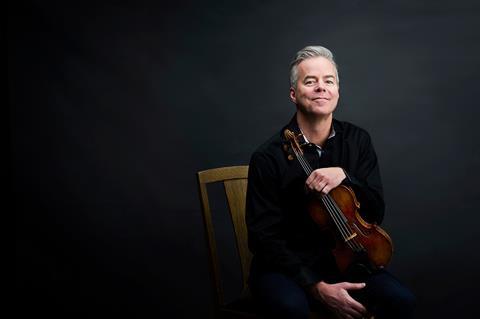Researchers who seek to compare Old Italian instruments with modern ones under scientific conditions don’t appreciate that the potential of a Strad is intrinsically entwined with its player, writes Frank Almond

Instruments by Antonio Stradivari and other Old Italian masters sound and play pretty much the same as modern instruments, but newer instruments are louder. Also, soloists and audiences can’t really tell the difference anyway. So indicates the latest published analysis of tests overseen by acoustician Claudia Fritz and violin maker Joseph Curtin. Much debate has ensued regarding the researchers’ methodology and results, particularly among professional players and luthiers. I was intrigued by the original tests in 2010, and enjoyed a cordial but lively blog exchange with Ms Fritz at the time.
It occurs to me that a critical (and perhaps cryptic) factor has been left out of the research, something that an experienced string player will know well, which is that an instrument and a player mysteriously adapt and acclimatise to one another over time and under different professional circumstances. Undoubtedly this correlation is to some degree the result of practical adjustments – to the set-up, choice of strings and bow, and so on. But perhaps there is a psychological component, too, given the storied histories of some violins crafted by old masters and the luminaries whose hands these instruments have passed through.
I’ve had the unusual good fortune to play on three golden-period Strads for several years each, the latest being the ‘Lipiński’ from 1715. In each case it took at least three months for me to recognise fully what was possible (or not) with these extraordinary functional antiquities under a wide variety of conditions. I observed that as time passed my violin also seemed to open up and adapt. And what about that psychological element? Try as I might, I can’t ignore the fact that Giuseppe Tartini was the first known owner of the ‘Lipiński’ or that this instrument was played by the concertmaster of the Leipzig Gewandhausorchester in the premiere of the Brahms Violin Concerto. Nor can I entirely forget the theft – and subsequent recovery – of the ‘Lipiński’ in early 2014, a brutal attack on us both that (according to the FBI) remains the only targeted and planned armed robbery of a specific high-end instrument on record. Like it or not, I am now part of a lineage and legacy that has changed the way I live and work with this violin on multiple levels.
Some of the processes of connecting will, of course, occur with a much newer instrument as well, although for me the result has always been quite different. At various points in my career I’ve had the opportunity to play some spectacular modern instruments. Curiously, though, over time my artistic options seemed to narrow rather than expand, even with some of the finest contemporary instruments. Something important was missing after a few weeks or months had gone by – a certain ease of playing and, most importantly, the full palette of sonic colours I had experienced with old instruments, even if the violin did project well.
Researchers seem fixated on attributing the various qualities of Old Italian instruments to specific elements – the passing of time, the varnish, and so forth. In my view it’s a thousand different factors mixed together inexplicably, and that are largely ‘untestable’ in a traditional sense. Many professional musicians will develop a unique bond with an instrument, old or new. I have found this connection to be far more profound with the ‘Lipiński’ – especially now. I remember being utterly traumatised and disoriented when it was stolen, and not just because I had been shot with a Taser. It was as though a fundamental part of my life was gone forever; that artistic chapter abruptly concluded. Would I have felt the loss with the same intensity if my violin had been made in 2012? Speaking as someone who lives and works with one of these enigmatic objects, the outcomes of a clinical acoustic study are not ultimately that meaningful. I’m quite happy to explore the sonic and artistic capabilities of the ‘Lipiński’ every day, whatever the research says.
Photo: Frank Almond with the ‘Lipiński’ Stradivari
©Jennifer Brindley
































2 Readers' comments